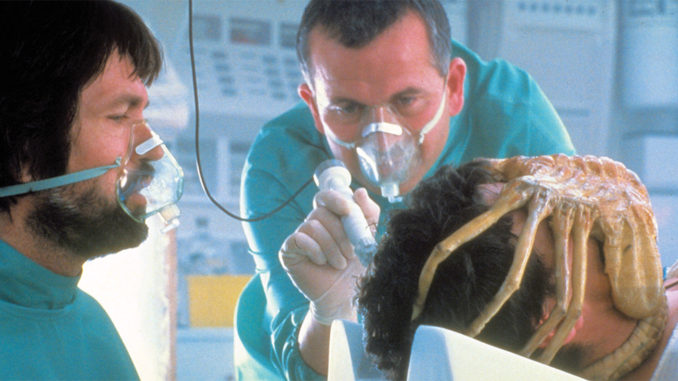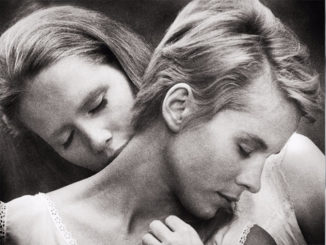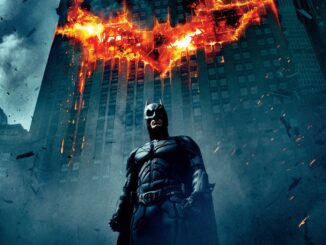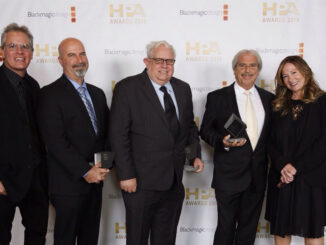
by Frank Openchowski
As a seven-year-old living in the jungles of Matute, Colombia, I was surrounded by an exotic land. My pets weren’t limited to the three dogs and six cats that roamed but also included a macaw named Ludwina, a howler monkey named Tarzan, several tortoises and an assortment of parrots and parakeets. On weekends, this paradise would be paralleled alongside fantastical new worlds in which I would fight mythical creatures with Sinbad, time travel in a DeLorean and learn how to use “the Force.” During one weekend, I was a passenger on an adventure that scared me into the film industry.
Television was limited then, with only two local channels that presented boring programs like soap operas and the news. My parents would supplement this monotony with three to four movies from our local rental store. For the most part, I could watch all of them, but on rare occasions a movie would be deemed too scary for me. One title caught my eye, Alien (1979). I had to see it; they said, “No.”
I knew Mom wouldn’t budge, but Pops was a different story. After she left for church that Sunday morning, I proceeded to beg him until he caved. He agreed with one condition — the moment I was scared, he would stop the movie. I accepted it as a challenge.
As the movie started, I was immediately entranced. We float through space and are taken to the cargo ship Nostromo, carrying a crew of seven. The crew is suddenly awakened by a distress signal and decides to investigate. I didn’t understand what the fuss was about; this wasn’t frightening but rather foreign and hypnotic. Admittedly, I flinched when the facehugger jumped out and latched onto the face of Kane (John Hurt), but thought my dad hovering over the Betamax ready to stop it seemed like overkill. It wasn’t until around the one-hour mark that things began to change…
In a seemingly casual scene, we join the crewmembers at the mess hall having their last meal before going back into hibernation. The facehugger had dropped off and Kane was feeling better and eating what looked like spaghetti. As the crew jokes around and comments about how bad the food is, Kane suddenly gets into a choking fit. It gets progressively worse until he starts thrashing about, and the concerned crew jumps to hold him down.
After a bit of struggling, we hear Kane scream and his white shirt turns red. Everyone freezes and stares, and then Kane starts convulsing again. Finally, we hear a pop and see his shirt move; something was trying to get out! One final gruesome attempt — and an alien rips through his chest. The sheer horror of the crew’s faces with blood spraying all over and the sound of that horrible-looking alien made me quickly cover my eyes and scream. Pops immediately stopped the movie and quickly hugged and reassured me that everything was OK. In his attempts to calm me, he reminded me of the Ray Harryhausen movies in which mythical creatures looked bigger than the humans but were in fact small, malleable sculptures. He used our macaw, Ludwina, as an example of how we could make her look like she was ten stories high with the use of forced perspective and lenses.
One final gruesome attempt — and an alien rips through his chest. The sheer horror of the crew’s faces with blood spraying all over and the sound of that horrible-looking alien made me quickly cover my eyes and scream.
Something happened as we did this exercise; I regained control. The knowledge that I was watching something not real, which I could create myself, gave me comfort. In that instant, I wanted to learn as much as I could about visual effects and movies so that the next time, I could dissect what I had seen and not be afraid. My passion for sci-fi and horror movies had begun — as well as an aversion to spaghetti for about two years.
I didn’t revisit Alien until I was age 15. After eight years of studying films and visual effects, I was able to watch and appreciate its genius. Ridley Scott’s aesthetic and mastery were already at legendary levels, Jerry Goldsmith’s amazing score blended beautifully with Jim Shields’ superb sound editing and editor Terry Rawlings’ pacing hypnotized me once again.
And as a teenager, I was in love with Ripley (Sigourney Weaver). Strangely, something else happened: I couldn’t look away from the alien; I finally could truly admire it. The world that H.R. Giger and the visual effects team created won the Oscar for best visual effects. My respect for the xenomorph continues to this day, so much so that I have numerous figures of the alien keeping an eye on me in my office.
I’ve made it a point to watch Alien at least once a year. Recently, it’s been every April, the month my dad left us two years ago. Because of that pivotal day when I was seven years old, my life changed as I was frightened into appreciating and ultimately joining our industry. I’ll always look forward to the chance of scaring people into loving Alien as much as I do. Thanks, Pops.





